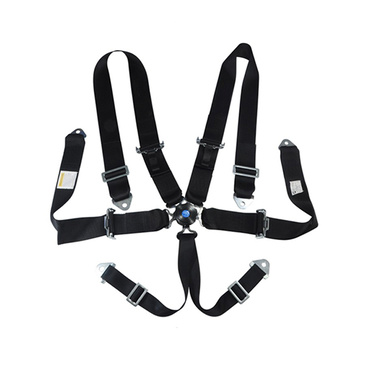How to standardize the use of racing harness
Release time:
2022-10-10
Racing is a dangerous competitive sport. Accidents can happen to anyone at any time. Drivers, engineers, and spectators may be injured. When we usually play the car, whether it is on the track or off the track, we should do our best to ensure safety.
Racing is a dangerous competitive sport. Accidents can happen to anyone at any time. Drivers, engineers, and spectators may be injured. When we usually play the car, whether it is on the track or off the track, we should do our best to ensure safety.

Today, rules in terms of safety. It includes driver safety equipment such as racing harness, helmet, HANS, and fireproof clothing, as well as the safety awareness required by drivers and team members.
Usually we can see a lot of unreasonable use of helmets, and we can also see a lot of non-standard racing car modifications.has guiding rules, try to protect yourself by following the rules.
I hope that in the domestic arena, whether it is a regular event or a track day, everyone can better protect the safety of themselves and others. as an example, and explains it for ordinary players and riders, not strictly literal translation. If you need to participate, please also carefully study the special rules of each event and the normative documents such as the China Automobile Federation.
The racing harness can be regarded as the most important safety equipment.
racing harness rules.
The 6-point racing harness has 2 shoulder straps, 2 crotch straps, 2 leg straps, and there are adjustment buckles on the straps for adjusting the length. The 6 straps are inserted into a slot in front of the rider's abdomen. The receptacle is located on a crotch belt and should have the function of quickly releasing all the buckles, so that the driver can quickly release the racing harness and escape the car in the event of an accident.
After the racing harness is properly fastened and the length adjusted, the pressure on each strap should be evenly distributed across the width. There should also be no excessive curling in width. The stitching on the racing harness should be permanently stitched and cannot be easily removed. The burning speed of the belt after fire should be less than 75mm/min. The width of the shoulder strap should not be less than 70mm under load. Under a load of 15KN, the length of the strap should not change by more than 10%. When the racing harness is loaded, the width cannot be less than 44mm. Under a load of 25kN, the crotch belt cannot be broken, and its width cannot be less than 44mm. When the leg strap is loaded, the minimum width of the part that is in contact with the rider's body is 44mm, and the minimum width of the part that is not in contact is 25mm. Under a load of 25kN, the crotch strap itself cannot break. Under a load of 18kN, the buckle on the crotch strap cannot break.
The metal parts on the racing harness should be rust-proof. The surface should be smooth to prevent cutting the straps or the suit. When a 15kN load is applied to the strap, the slip at the adjustment buckle must not exceed 15mm, and the overall slip between the fixing point and the connection plate must not exceed 25mm.
Related News
Add: NO.4-12 , Houbanshan Road, Xinju, Tangxia, Ruian, Wenzhou, Zhejiang, China. PC.325204
E-mail: brucezhu@jeatu.com
WeChat: JEATUracing
Add: NO.4-12 , Houbanshan Road, Xinju, Tangxia, Ruian, Wenzhou, Zhejiang, China
PC.325204
E-mail: brucezhu@jeatu.com
WeChat: JEATUracing
Copyright | Wenzhou JEATU Safety Systems Co., Ltd. seo

